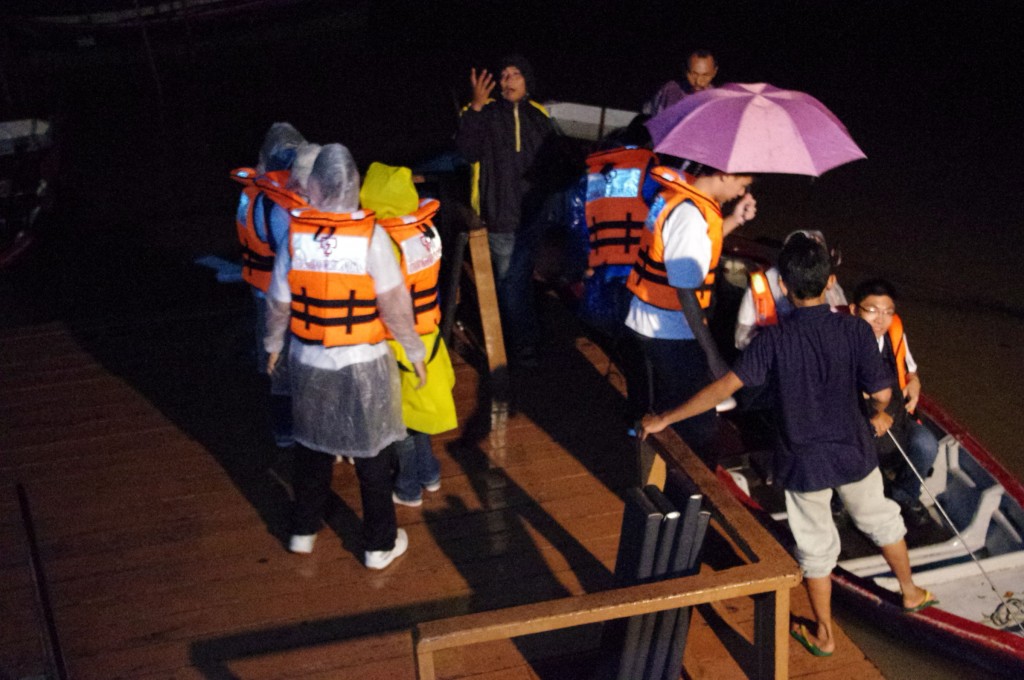Fireflies are one of the most efficient natural light producers in the world – they are capable of emitting light without giving off heat. These exceptional creatures are treasures of Kampung Kuantan in the district of Kuala Selangor, Selangor.
However, their survival has been threatened by human activity and land development. The use of herbicides and insecticides are also harmful to the fireflies because they change the composition of the soil.
The fragile nature of the environment of the fireflies means that continuous conservation efforts are needed to ensure the survival of the species. Thankfully, rehabilitation efforts have been successful.
Since 2006, Tenaga Nasional Berhad (TNB), together with the Selangor Government, have worked to protect fireflies in Kuala Selangor.
“TNB has conducted controlled research on the replanting of Berembang trees throughout the firefly park as fireflies prefer to live and breed there. These trees are difficult to find,” said Shahril Mod Husin, 42, a biologist and senior researcher (environment) for TNB Bhd.

The BRATs interviewing Shahril about the fireflies and Tenaga Nasional's efforts to conserve their habitat.
TNB has also taken the initiative to gazette the firefly breeding area, Sungai Selangor, to prevent further destruction of the area.
TNB regularly organises campaigns and contests in learning institutions to educate youth on ways to protect fireflies. Promoting Kampung Kuantan Firefly Park as an ecotourism centre has also increased public awareness about protecting the habitat of the fireflies. These conservation efforts have managed to improve the conditions for the beetle species and have made Kampung Kuantan a popular tourist destination.
Malaysia is home to four major groups of fireflies – the Pteroptyx, Luciola, Colophotia and Lychnuris. Kuala Selangor has the most number of the Pteroptyx group of fireflies in the nation – it makes up 90% of the local firefly population.
“Male fireflies tend to flash brighter compared to female fireflies,” said Shahril.
A firefly undergoes four stages of life – egg, larvae, pupa and adulthood. The average lifespan of a firefly is between six and seven months.
“Why do you think fireflies glow in the dark? One of the reasons is that they want to find their ‘true love’,” joked Shahril about the fireflies’ mating ritual.
“There is a difference between the male and female fireflies – the rhythmic flashing of light distinguishes the male firefly from the female ones. For every two flashes by the male firefly, the female firefly flashes its light once,” he said.
At the Firefly Park, visitors get to go on a short sampan ride (RM40 per boat, for four person) on the river at night, where they get to see the fireflies flashing their bulbs brightly among the Berembang trees. The friendly boat paddlers are more than willing to talk about their work experiences, and the history of the park.

Flash photography is not allowed near the trees at the Kampung Kuantan Firefly Park, so this was the best photo the BRATs could get from the jetty. You can see some BRATs getting on the boat for the 15min ride out to the firefly-filled trees.
“This park has been around even before TNB came to Kampung Kuantan, but the facilities have improved quite a bit because of them,” said Nur Zaid Ali, an 18-year-old paddler.
Another boatman, Hasain Abdul Ghani, 65, has worked at the park for 25 years. “I love my job, even though I only make RM13 (per ride),” he said. The remaining RM27 goes back to his employer, which is used for maintenance purposes.
“There are about 60 rides a day, which means that around 240 people come to see the fireflies every night,” Hasain said, adding that scientists from all parts of the world also come to study the species of fireflies in Kuala Selangor.
Tourists throng the park almost every evening. Japanese tourist Atsuko Yamazaki, 46, is in Malaysia to see the fireflies and orang utan. “It’s really beautiful, though I can’t really see much because of the rain,” she said.
On rainy evenings, the fireflies seek shelter in the berembang trees, so the blinking lights will decrease.
As the firefly population faces various threats of extinction, it is important for Malaysians to conserve them so that the younger generation will be able to appreciate and cherish these wonders of nature.

Tell us what you think!